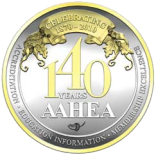Have you ever wondered why we learn what we learn in school?
Maybe you've sat through classes thinking, "When will I ever use this?" Well, we have all been through this!
But nowadays, Outcome-Based Education (OBE) is changing the learning experience. The focus is more on teaching things that pupils will actually use in real life. It is like having a GPS for learning – your students know exactly where they are heading and how to get there.
What's Wrong with Traditional Education?
Traditional education often focuses on memorizing facts to pass tests rather than truly understanding and applying knowledge. While this approach builds theoretical knowledge, it doesn’t always prepare students for real-world challenges. This is the problem OBE is trying to fix- emphasize practical skills, critical thinking, and real-life application, making learning more meaningful and effective.
Understanding Outcome-Based Education (OBE)
OBE focuses on what students should know and be able to do by the end of their learning journey. Instead of just completing courses and memorizing facts, OBE ensures that every lesson helps students develop real-world skills. It sets clear goals, uses flexible teaching methods, and measures success based on students' ability to apply their knowledge. This approach makes learning more meaningful and prepares students for future challenges.
The Building Blocks of Outcome-Based Education
OBE consists of several essential components that shape its effectiveness:
- Clear Destinations
Every lesson should start with specific goals- shaped by real input from employers and industry experts. These goals reflect what graduates should achieve 3-5 years after finishing.
- Stepping Stones to Success
Think of practical abilities like solving complex problems, working in teams, and communicating effectively that every student should master. Each course must have its mini-goals (Course Outcomes) that build toward the bigger picture.
- Regular Check-Ins
Students must know upfront what success looks like. It is possible through regular assessments that show progress, like mile markers on a journey. As a skillful teacher, you can adjust your approach based on how your students are performing.
Why Outcome-Based Education Makes Perfect Sense Today
Modern education demands a system that prioritizes student success and long-term learning. OBE offers several benefits that make it an important part of today's academic structure.
- Provides Clarity in Learning
OBE eliminates confusion by setting clear expectations from the start. Students know what they need to accomplish, while educators design lessons to meet those goals. This transparency ensures focused learning and better results.
- Promotes Flexibility in Teaching Methods
Traditional education follows a one-size-fits-all approach. OBE, on the other hand, encourages educators to adopt diverse teaching methods. Teachers can use case studies, interactive sessions, group discussions, and hands-on projects to suit different learning styles.
- Improves Student Engagement
A passive learning environment limits student participation. OBE encourages an active learning culture where students participate in discussions, problem-solving activities, and real-world applications. This improves their understanding and retention of knowledge.
- Builds Industry-Ready Graduates
Employers seek graduates with strong analytical skills, teamwork, and adaptability. OBE prepares students with these competencies, making them more employable. Institutions collaborate with industry professionals to design relevant learning outcomes.
- Encourages Skill Development
Beyond theoretical knowledge, OBE focuses on practical skills. Graduates possess problem-solving abilities, decision-making skills, and professional competencies that prepare them for workplace challenges.
- Guarantees Continuous Improvement
OBE is not a static system. Regular assessments help institutions examine student performance and identify areas of improvement. Teachers refine their methods based on student feedback, ensuring an evolving and effective learning environment.
- Addresses Learning Gaps
Unlike conventional education, where struggling students often fall behind, OBE identifies learning gaps early. Teachers can provide additional support through personalized instruction, helping all students reach their potential.
- Prepares Students for Lifelong Learning
In a rapidly changing world, lifelong learning is necessary. OBE sets a habit of continuous self-improvement. Students develop the mindset to adapt to new challenges and keep learning beyond formal education.
Be a Guide Rather Than a Lecturer
As a modern teacher in an OBE classroom, try to be more like a coach than a traditional lecturer. Create real-world learning experiences by connecting lessons to practical situations.
A math teacher might have students analyze local business data instead of solving abstract problems. An English teacher could assign creating marketing materials rather than just essays.
Utilize diverse teaching methods to reach different learning styles. This includes mixing lectures with group projects, hands-on activities, and individual work. Give regular feedback through quick assessments and one-on-one discussions. This habit will help you catch struggles early, ensuring no student falls behind.
Bottom Line
OBE bridges the gap between education and career success. Try integrating technology in the classroom to make learning interactive, personalized, and future-ready. After all, every teacher like you dreams of seeing their students succeed in an ever-evolving world!
We believe education should be accessible for everyone. That’s why we don’t charge for our blogs. Find the right course that will help you in your career with us, contact us at 91-6292150868. You can mail us at act@asiancollegeofteachers.com.
Written By : Varsha















